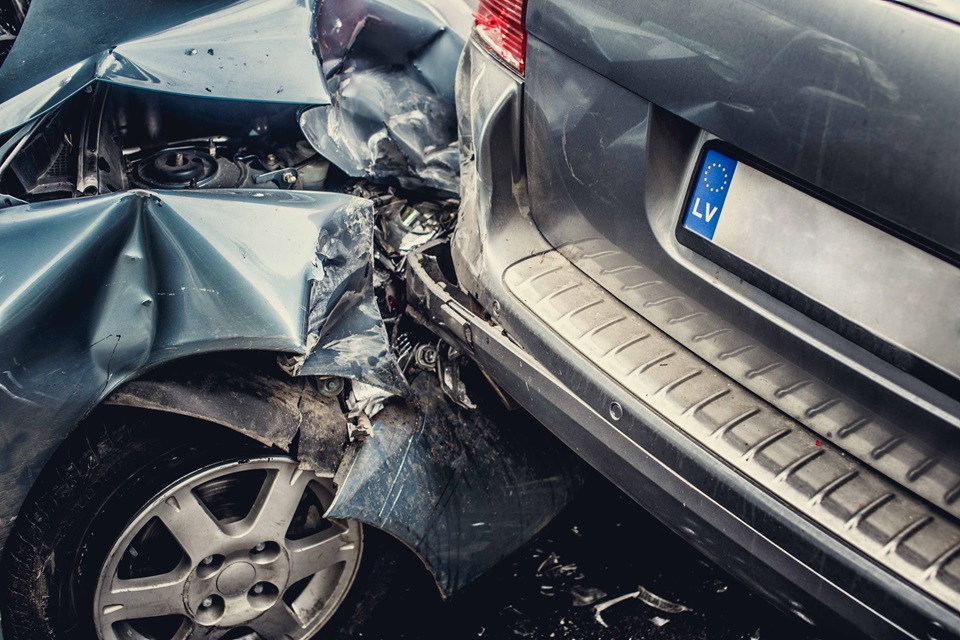While all car accidents can cause significant injuries and property damage, some types of collisions present a significantly higher risk of an adverse outcome for everyone involved. Understanding the characteristics of dangerous crashes can help drivers avoid hazardous situations and protect themselves on the road. In this article, we discuss some of the most deadly types of collisions and how they can be avoided.
Table of Contents
Head-On Collisions Are Considered The Most Deadly
Head-on collisions are widely considered the most dangerous type of car crash. During this type of crash, two vehicles hit each other straight-on while traveling in opposite directions. A head-on collision is particularly dangerous because the momentum and force of the involved vehicles are directed in opposite directions, enhancing the severity of the initial impact. The combined impact of a head-on wreck frequently causes catastrophic or fatal injuries among occupants of both vehicles at even moderate speeds.
Several factors can make a head-on collision more likely to occur. Driving under the influence of alcohol or drugs significantly impairs a driver’s judgment and ability to control their vehicle. This can cause a driver to swerve into oncoming traffic, leaving other motorists very little time to react and avoid a collision. Distracted driving can also result in erratic or dangerous behavior behind the wheel. Unsafe passing maneuvers can cause a driver to veer into oncoming traffic if they misjudge the speed of other vehicles and panic.
If a dangerous driver causes a serious crash, there may be legal recourse for the other motorist(s) involved in the collision. An experienced car accident attorney in Atlanta might be able to provide assistance to the crash victim and their loved ones.
Intersections Frequently Cause T-Bone Collisions
T-bone crashes occur when one vehicle strikes the side of another vehicle. This type of crash frequently occurs at intersections. Since the sides of vehicles offer less structural protection for occupants, these crashes can cause serious injuries to the occupants of the car that is struck. Broken bones, internal organ damage, and head and neck trauma are common injuries in a T-bone crash.
Several factors can make a T-bone crash more likely to occur. Failure to yield the right of way is a major cause of wrecks, particularly at intersections without stop signs, traffic signals, or other clear indicators over which driver has the right of way at a given moment. Drivers who run red lights or fail to stop completely at stop signs can hit vehicles passing through an intersection. Drivers that make a turn without properly checking their blind spot can also cause a T-bone crash.
Rollover Accidents Can Cause Severe Injuries
In a rollover accident, a vehicle rolls over onto its side or roof. Rollover accidents have a high risk of ejection, crush injuries, and vehicle collapse. If a car’s occupants are not wearing seatbelts or the collision is violent enough, they may be flung from the car and suffer serious injuries. Even if occupants remain inside the vehicle, a rollover can cause the roof to collapse or the victim to be crushed as the interior deforms.
Certain vehicle designs, such as top-heavy SUVs or trucks, are more prone to rollovers during sharp turns or sudden maneuvers. Driving at a high speed makes vehicles more unstable, increasing the chance of a rollover if the driver loses control or hits another car. Road conditions, such as uneven pavement or soft shoulders, can contribute to a rollover crash.
Highways & Freeways Are Prone To Pileups
Multi-vehicle pileups (or chain-reaction crashes) involve multiple vehicles colliding one after another. These types of collisions frequently occur on high-speed highways or freeways. Since there can be anywhere from a few to dozens of vehicles involved in the crash, these collisions can be incredibly challenging for first responders to deal with. The chain reaction nature of pileups can lead to a significant number of injuries and fatalities, particularly when heavy vehicles such as commercial trucks are involved.
Several factors contribute to multi-vehicle pileups. Inclement weather, such as fog, rain, or snow, can significantly reduce visibility and make it challenging or impossible to see stopped vehicles, obstructions, or slow traffic ahead. Drivers that are traveling at a high rate of speed despite low visibility may be unable to stop quick enough to avoid crashing.
Avoiding Dangerous Situations On The Road
Understanding the dangers associated with different types of car crashes can empower drivers to make safer choices behind the wheel. By avoiding risky behaviors and prioritizing defensive driving, we can protect ourselves and other motorists around us as well. We hope this article helps you and your loved ones stay safe the next time you hit the roads!



